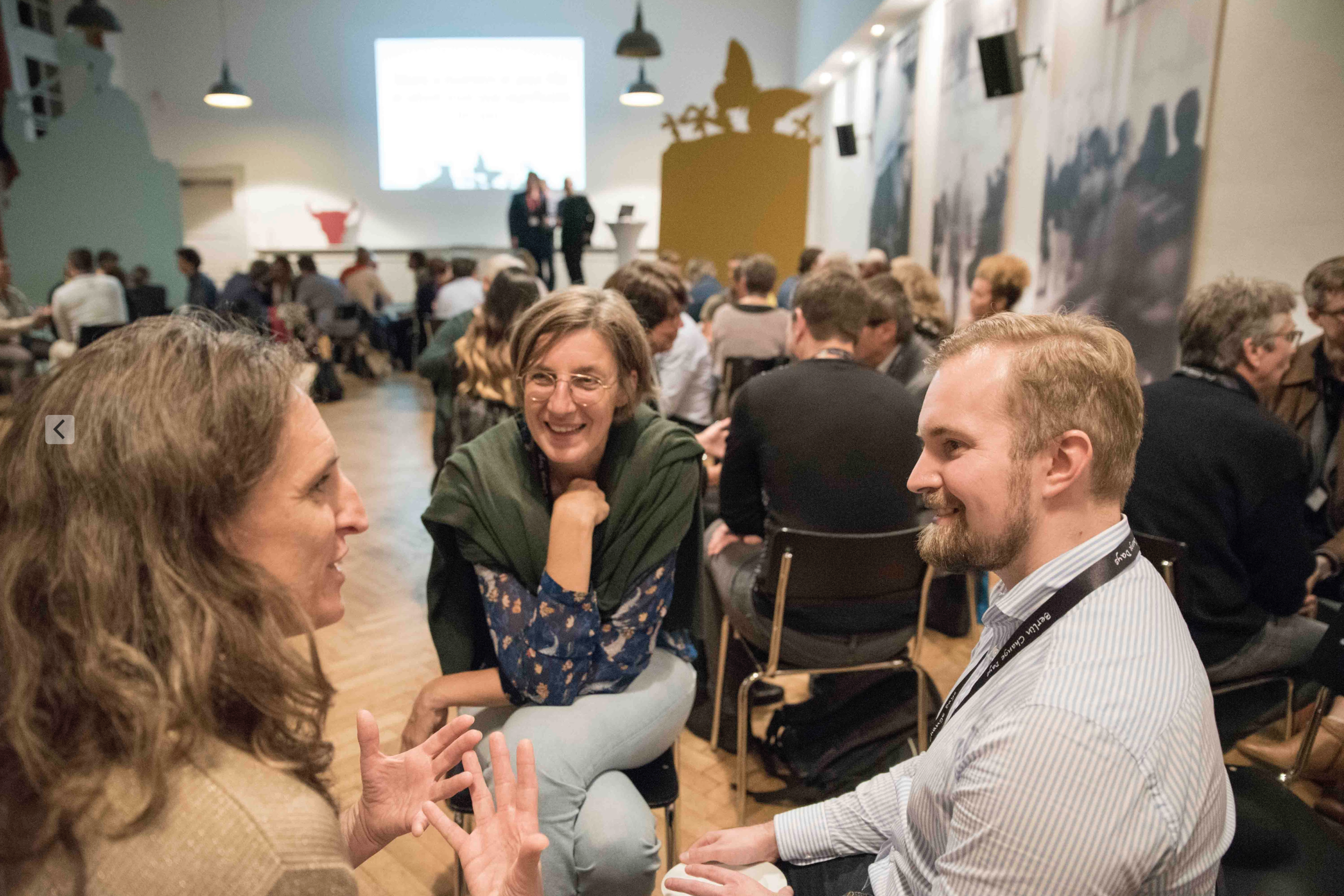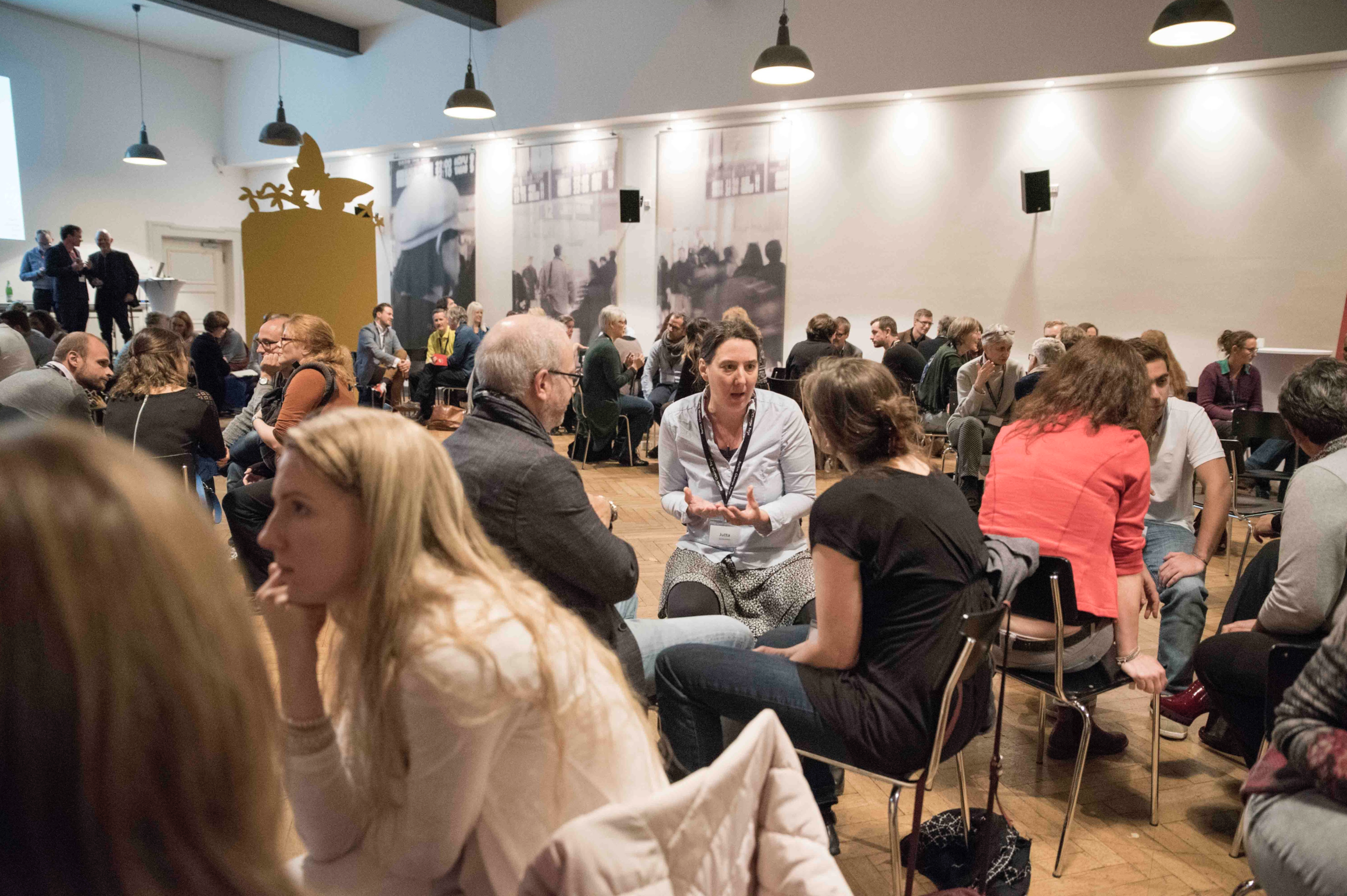A constant in my work as consultant and change facilitator in the past months is a concern about „moments“. It was brought into my focus by Chené Swart talking about her work in the Masterclass at BEYOND STORYTELLING 2017 and in the many conversations that followed afterwards.
I believe that as facilitators, we want to create „moments that matter“, in which we can support the people we work with in their search for new meaning, sensemaking or transformation. In creating these moments I used an approach from Chené Swart to invite the remembrance of significant moments to create relevance.
Generating new meaning and making sense of a situation is a key ingredient for transformation. Often it is about discarding old assumptions and creating new meaning. Not only in cognitive terms but also emotionally. Working with stories is a powerful way to connect the emotional and cognitive aspects of transformation.
Sensemaking is one of the key uses of working with stories. Stories speak to our head, hearts and minds. The question is how we get to the stories that map the field in a way that is useful and relevant for the people we are working with.
Entering the moments portal – Relevance
In any setting that has the stated goal of stimulating transformation of some kind, one of the key questions is how a topic becomes relevant to the people we work with. I don´t mean relevant only in the sense that people say „Yes, this topic is relevant or important for me.“ Relevance, for me, in the settings I work in, is an emotional stance towards the topic. A concern with the topic and an engagement and commitment to find out what the topic at hand really means for the people and the community involved. In some cases we do have a sense of urgency in the room but this isn´t always the case. So how do we invite engagement and honour people´s presence and time?
If you are used to working in participatory settings a lot of different methods might spring to your mind that enable you to set in motion ways for people to engage with a topic and with each other. But even with some years of experience with different approaches to the design and facilitation of such settings, Chenés work with moment is a constant eye opener – both for it´s simplicity and the impact it creates. The key to this approach is asking people to tell about moments in which a topic or theme was / is / became relevant and important to them. And this works magic.




Working with the moments Portal on Trust During the Berlin Change Days 2017. Pictures by @miriaminchange
Abstraction and experience
As human beings we are bound to our bodies. In each given situation we perceive with all our senses. Going up the ladder of abstraction, we create meaning out of the different impulses we get from our senses. With each step up the ladder, our experience is enriched, filtered and transformed by our mental models and interpretation routines. We move from experience to abstraction.
By doing this, we don´t perceive the particulars of the situation but the commonalities it has with our pre-established modes of thinking and seeing the world. Both as a means to make sense of what is happening and in an effort to reduce cognitive load. This enables us to react swiftly and orient ourselves. Albeit this „fast thinking“ works in a lot of situations, it also carries the risk of missing important pieces of information and makes us prone to oversimplifying things.
In a situation in which we want to invite people to really re-think a certain topic, fast thinking often leads to a situation in which we either see a new topic through our well established frames of reference (meaning: there is nothing new) or that we engage but without linking it an emotional element that is necessary for true transformation. Our attitudes and belief systems are shaped by the experiences we make and systems of symbols (culture) we use to make sense of them. All this adds layers of abstraction and generalizations. The magic of asking for moments is that people are recalling specific situations or moments in which a topic has or had relevance to them. With this simple question, we invite people to strip away their interpretations and simply recall. Indeed, if we ask people to take us to the moments that mattered for them, it becomes even more than recalling, it becomes reexperiencing.
The power of this way of working lies for me in the fact that there is also no abstraction needed to talk about moments. The cognitive effort is not focused on making interpretations or finding deeper meanings or patterns. The cognitive effort is low in that it entails „simple recalling“. Letting people talk about moments is – in a sense – making people listening to themselves anew. This also invites the emotions and feelings that made up the experience of this moment. Working with moments, the invitation is to step down the ladder of abstraction and get close to the „raw data“ of our experiences.
Emotional and cognitive effects of working with moments
On an emotional level, this work invites being a true witness and builds relationships and community. As listeners to the moments of others we move from interpretation to perception, as we see a situation metaphorically through the eyes of the other. This often creates a sense of belonging and intimacy. Not only towards others, but also towards ourselves. We are not only witnessing others but we are also listening to ourselves. We experiencing the moments anew through our recalling and retelling.
On a cognitive level, I believe that this work – revealing the „raw data“ – cracks open our interpretations of situations, moments and the experiences we made. By stripping away our interpretations and mental models, we are able to re-interprete these moments anew. This creates the possibility for new ways of looking at things and the opportunity to tell a story in a new and different way.
From moments to stories
I experimented a while with asking the participants to my workshops to tell a story in which the topic at hand was relevant. From my experiences with the moments portal, I believe that this creates a hurdle that is not necessary. On the one hand people ask themselves what constitutes a story worth telling in the specific setting we are in. It concerns people with what to tell and how to tell it. Instead of focusing on relating themselves to the topic and the other, they are concerned with style and form. That is not necessary. If you ask people about moments, they will tell a story anyway.
Reconstructing the story of an R&D Team through the moments portal. What story emerged? What do we learn about us as a team looking at these moments?
From a narrative standpoint, this also enables to re-write the stories that shape the actions, decisions and interactions within an organization. Stories are made up by moments connected by a plot outlining the landscape of action and the landscape of consciousness. These stories, once established, are easily triggered for the interpretation of a given situation.
„While some community narratives are quite direct, many well-known narratives are coded as visual images, as symbols, as stereotypes, and as performances of behavior so ritualized that we may be unaware of the narratives we implicitly accept and enact, [...].Underlying much of what we know, and can recall, are encoded stories indexed by certain cognitive handles. […]. They are cues to the underlying story.“ (Rappaport, 2000, S.5)*
By going back to the moments in which the themes and narratives emerged, these moments become free of these assumptions and pre-established storylines. They become building blocks that can be re-interpreted and re-storied in a different way. A story that is more in line with what is now required from the organization or community.
Constructing a story out of these moments is again a step up the ladder of abstraction. But this abstraction is not as abstract as a model or theory. It is still a story with all the elements that go along with that. More importantly, every step that follows in this meaning making process is fueled with the experiences and emotions of the people involved.
Because they became relevant through the personal engagement and through community in passing through the moments portal.
*Rappaport, J. (2000) Community Narratives: Tales of Terror and Joy. In American Journal of Community Psychology, Vol. 28, No. 1.
More on Chené's work:










